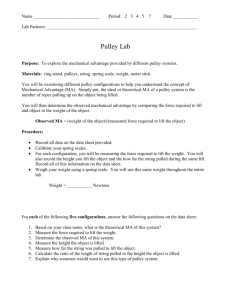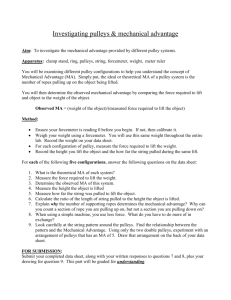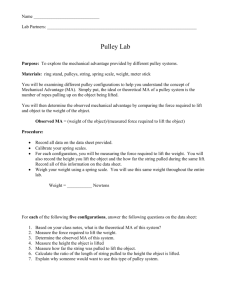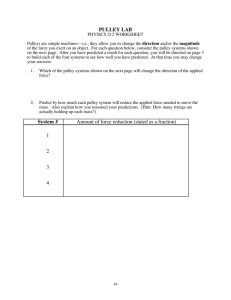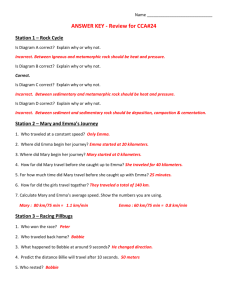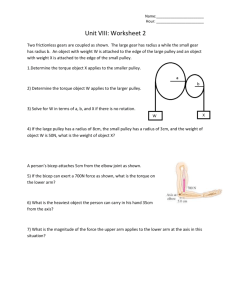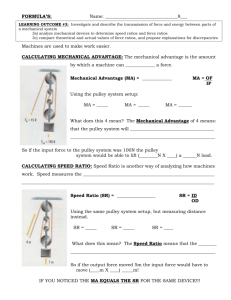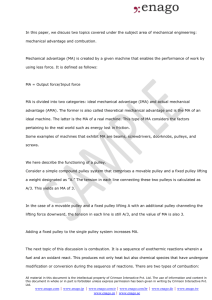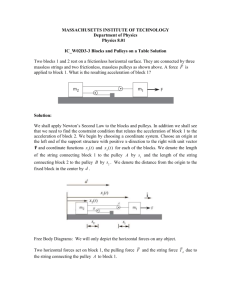Pulley Lab
advertisement
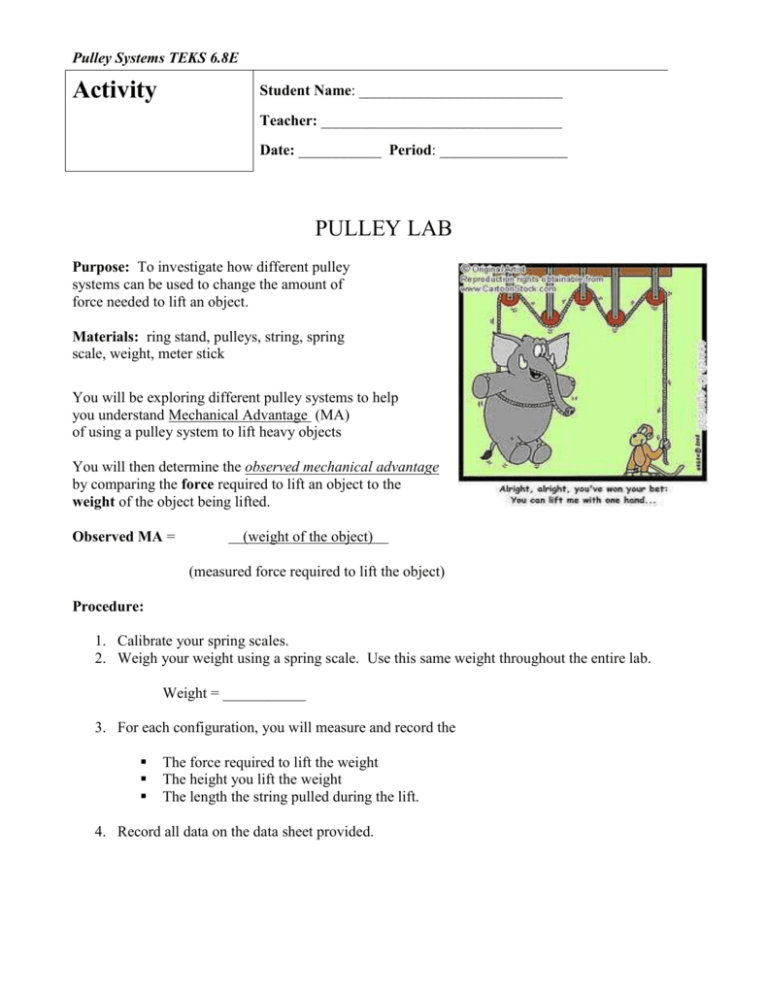
Pulley Systems TEKS 6.8E Activity Student Name: ___________________________ Teacher: ________________________________ Date: ___________ Period: _________________ PULLEY LAB Purpose: To investigate how different pulley systems can be used to change the amount of force needed to lift an object. Materials: ring stand, pulleys, string, spring scale, weight, meter stick You will be exploring different pulley systems to help you understand Mechanical Advantage (MA) of using a pulley system to lift heavy objects You will then determine the observed mechanical advantage by comparing the force required to lift an object to the weight of the object being lifted. Observed MA = (weight of the object) (measured force required to lift the object) Procedure: 1. Calibrate your spring scales. 2. Weigh your weight using a spring scale. Use this same weight throughout the entire lab. Weight = ___________ 3. For each configuration, you will measure and record the The force required to lift the weight The height you lift the weight The length the string pulled during the lift. 4. Record all data on the data sheet provided. Pulley Systems TEKS 6.8E Activity Student Name: ___________________________ Teacher: ________________________________ Date: ___________ Period: _________________ For each of the following five configurations, record the following information on the data sheet: 1. What is the theoretical MA of this system? 2. Measure the force required to lift the weight. 3. Determine the observed MA of this system. Observed MA= (weight of the object)/(measured force required to lift the object) 4. Measure the height the object is lifted 5. Measure how far the string was pulled to lift the object. 6. Calculate the ratio of the length of string pulled to the height the object is lifted Ratio= (length of string pulled)/(height the weight is lifted) 7. Explain why someone would want to use this type of pulley system. #1: Single Fix Pulley #2: Single Moveable Pulley #3: Single Fixed, Single Moveable #5 Double Fixed, Double Moveable #4: Double Fixed, Single Moveable Pulley Systems TEKS 6.8E Activity Student Name: ___________________________ Teacher: ________________________________ Date: ___________ Period: _________________ Summary: (answer on data sheet) 8. Explain how the number of supporting ropes affects the mechanical advantage. Why can you count a section of rope you are pulling up on, but not a section you are pulling down on? 9. When using a simple machine, why do you need less force? What do you have to do more of in exchange? Fun Facts! A pulley is also called a “sheave” or a “drum” A pulley is one of the “six simple machines” History: Early peoples used the idea of a single fixed pulley to change the direction of a force. They threw vines or crude ropes over tree limbs to lift heavy objects. But since there was no wheel to turn, this use resulted in considerable friction. It is believed that by 1500 B.C.E. people in Mesopotamia used rope pulleys for hoisting water. Pulleys in Real Life! o Curtains o Bikes o Elevators o Wrecking ball o Raising a flag up a pole o Can you think of another?
